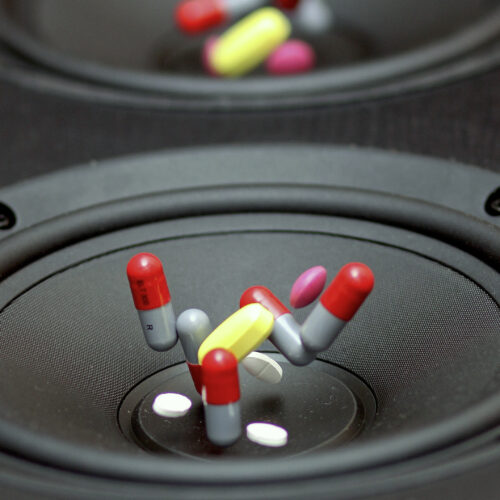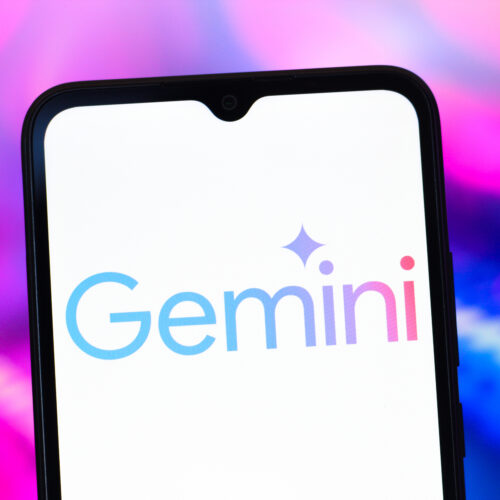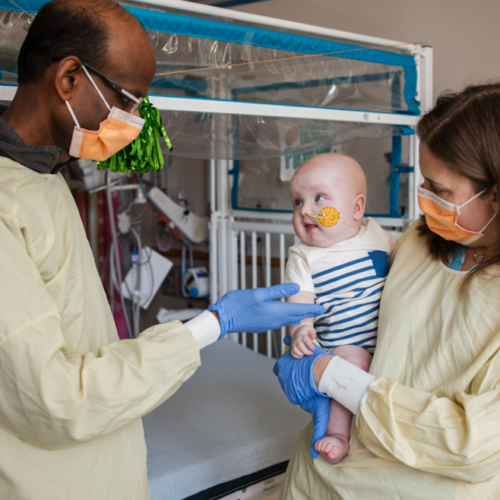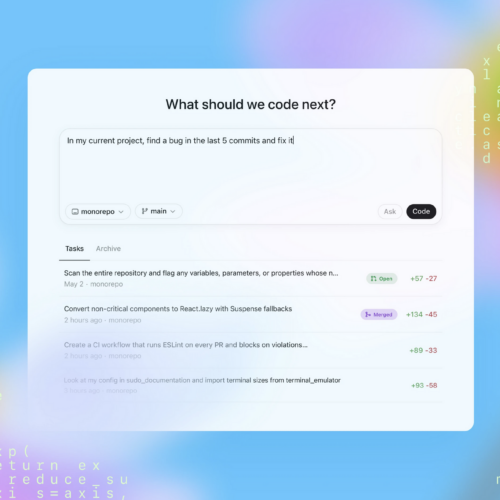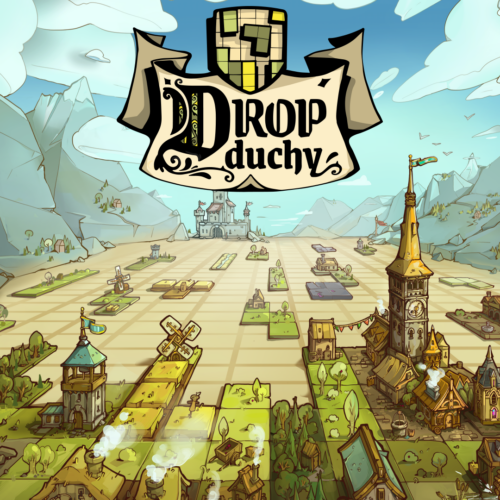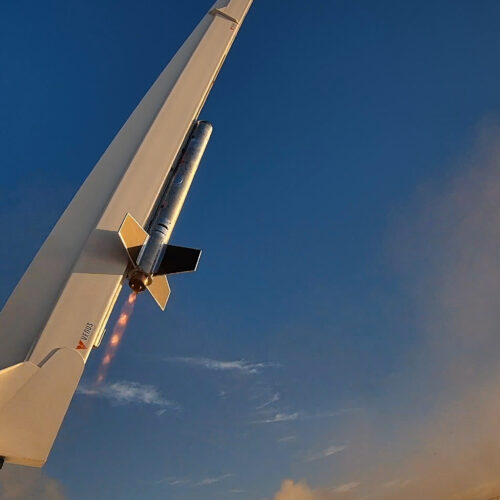- HBO’s The Last of Us S2E6 recap: Look who’s back!
Some of the most impactful scenes from the game get the HBO treatment.
New episodes of season 2 of The Last of Us are premiering on HBO every Sunday night, and Ars' Kyle Orland (who's played the games) and Andrew Cunningham (who hasn't) will be talking about them here after they air. While these recaps don't delve into every single plot point of the episode, there are obviously heavy spoilers contained within, so go watch the episode first if you want to go in fresh.
Kyle: Going from a sudden shot of beatific Pedro Pascal at the end of the last episode to a semi-related flashback with a young Joel Miller and his brother was certainly a choice. I almost respect how overtly they are just screwing with audience expectations here.
As for the opening flashback scene itself, I guess the message is "Hey, look at the generational trauma his family was dealing with—isn't it great he overcame that to love Ellie?" But I'm not sure I can draw a straight line from "he got beat by his dad" to "he condemned the entire human race for his surrogate daughter."
Andrew: I do not have the same problems you did with either the Joel pop-in at the end of the last episode or the flashback at the start of this episode—last week, the show was signaling "here comes Joel!" and this week the show is signaling "look, it's Joel!" Maybe I'm just responding to Tony Dalton as Joel's dad, who I know best as the charismatic lunatic Lalo Salamanca from Better Call Saul. I do agree that the throughline between these two events is shaky, though, and without the flashback to fill us in, the "I hope you can do a little better than me" sentiment feels like something way out of left field.
But I dunno, it's Joel week. Joel's back! This is the Duality of Joel: you can simultaneously think that he is horrible for failing a civilization-scale trolley problem when he killed a building full of Fireflies to save Ellie, and you can't help but be utterly charmed by Pedro Pascal enthusiastically describing the many ways to use a Dremel. (He's right! It's a versatile tool!)
Truly, there's pretty much nothing in this episode that we couldn't have inferred or guessed at based on the information the show has already made available to us. And I say this as a non-game-player—I didn't need to see exactly how their relationship became as strained as it was by the beginning of the season to have some idea of why it happened, nor did I need to see The Porch Scene to understand that their bond nevertheless endured. But this is also the dynamic that everybody came to the show for last season, so I can only make myself complain about it to a point.
Kyle: It's true, Joel Week is a time worth celebrating. If I'm coming across as cranky about it at the outset, it's probably because this whole episode is a realization of what we're missing out on this season thanks to Joel's death.
As you said, a lot of this episode was filling in gaps that could well have been inferred from events we did see. But I would have easily taken a full season (or a full second game) of Ellie growing up and Joel dealing with Ellie growing up. You could throw in some zombie attacks or an overarching Big Bad enemy or something if you want, but the development of Joel and Ellie's relationship deserves more than just some condensed flashbacks.
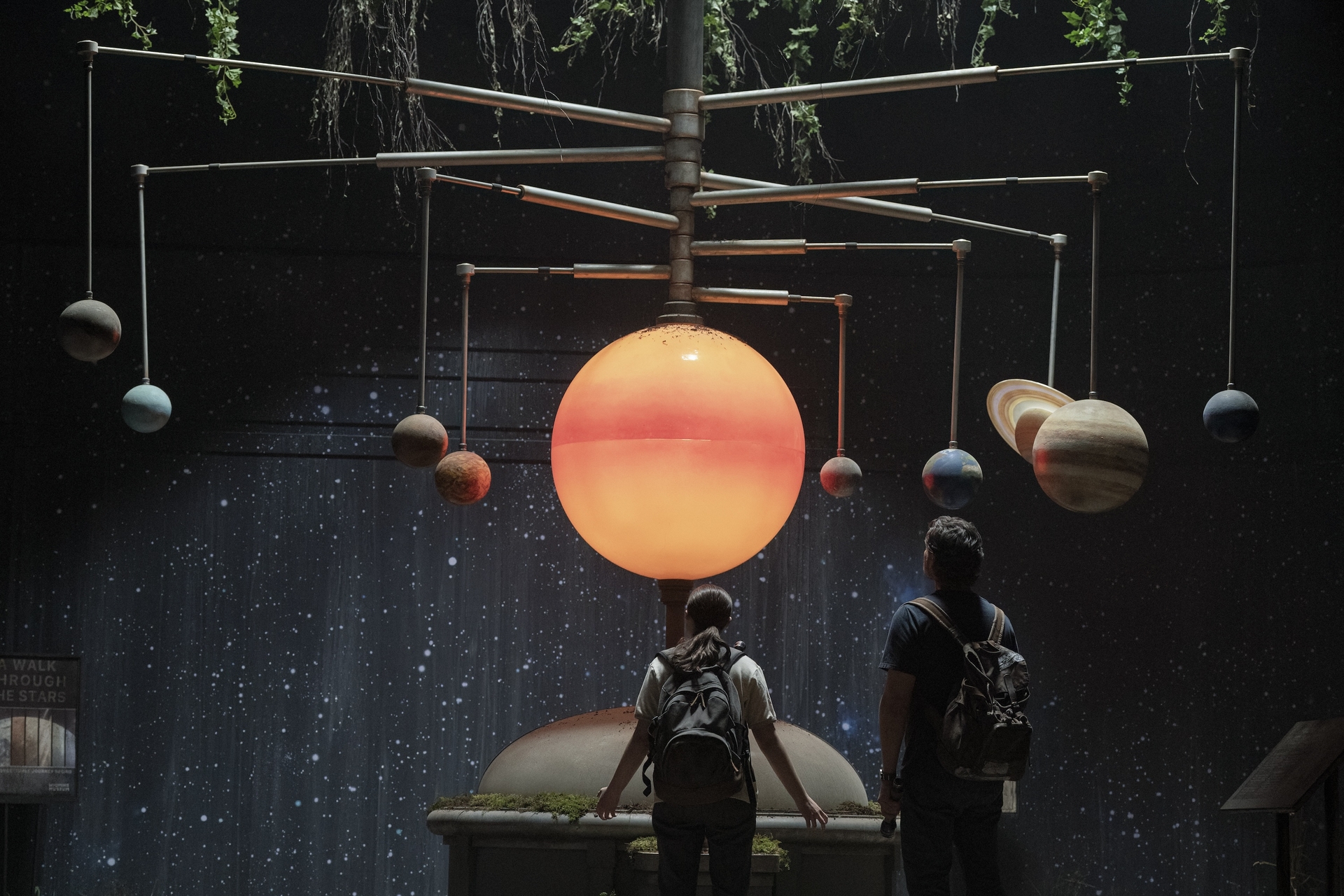 "It works?!"
Credit:
Warner Bros. Discovery
"It works?!"
Credit:
Warner Bros. Discovery
Andrew: Yeah, it's hard not to be upset about the original sin of The Last of Us Part 2 which is (assuming it's like the show) that having some boring underbaked villain crawl out of the woodwork to kill the show's main character is kind of a cheap shot. Sure, you shock the hell out of viewers like me who didn't see it coming! But part of the reason I didn't see it coming is because if you kill Joel, you need to do a whole bunch of your show without Joel and why on Earth would you decide to do that?
To be clear, I don't mind this season so much and I've found things to like about it, though Ellie does sometimes veer into being a protagonist so short-sighted and impulsive and occasionally just-plain-stupid that it's hard to be in her corner. But yeah, flashing back to a time just two months after the end of season 1 really does make you wonder, "Why couldn't the story just be this?"
Kyle: In the gaming space, I understand the desire to not have your sequel game be just "more of the same" from the last game. But I've always felt The Last of Us Part 2 veered too hard in the other direction and became something almost entirely unrecognizable from the original game I loved.
But let's focus on what we do get in this episode, which is an able recreation of my favorite moment from the second game, Ellie enjoying the heck out of a ruined science museum. The childlike wonder she shows here is a great respite from a lot of action-heavy scenes in the game, and I think it serves the same purpose here. It's also much more drawn out in the game—I could have luxuriated in just this part of the flashback for an entire episode!
Andrew: The only thing that kept me from being fully on board with that scene was that I think Ellie was acting quite a bit younger than 16, with her pantomimed launch noises and flipping of switches, But I could believe that a kid who had such a rough and abbreviated childhood would have some fun sitting in an Apollo module. For someone with no memories of the pre-outbreak society, it must seem like science fiction, and the show gives us some lovely visuals to go with it.
The things I like best here are the little moments in between scenes rather than the parts where the show insists on showing us events that it had already alluded to in other episodes. What sticks with me the most, as we jump between Ellie's birthdays, is Joel's insistence that "we could do this kind of thing more often" as they go to a museum or patrol the trails together. That it needs to be stated multiple times suggests that they are not, in fact, doing this kind of thing more often in between birthdays.
Joel is thoughtful and attentive in his way—a little better than his father—but It's such a bittersweet little note, a surrogate dad's clumsy effort to bridge a gap that he knows is there but doesn't fully understand.
 Why can't it be like this forever?
Credit:
Warner Bros. Discovery
Why can't it be like this forever?
Credit:
Warner Bros. Discovery
Kyle: Yeah, I'm OK with a little arrested development in a girl that has been forced to miss so many of the markers of a "normal" pre-apocalypse childhood.
But yeah, Joel is pretty clumsy about this. And as we see all of these attempts with his surrogate daughter, it's easy to forget what happened to his real daughter way back at the beginning of the first season. The trauma of that event shapes Joel in a way that I feel the narrative sometimes forgets about for long stretches.
But then we get moments like Joel leading Gail's newly infected husband to a death that the poor guy would very much like to delay by an hour for one final moment with his wife. When Joel says that you can always close your eyes and see the face of the one you love, he may have been thinking about Ellie. But I like to think he was thinking about his actual daughter.
Andrew: Yes to the extent that Joel's actions are relatable (I won't say "excusable," but "relatable") it's because the undercurrent of his relationship with Ellie is that he can't watch another daughter die in his arms. I watched the first episode again recently, and that whole scene remains a masterfully executed gut-punch.
But it's a tough tightrope to walk because if the story spends too much time focusing on it, you draw attention to how unhealthy it is for Joel to be forcing Ellie to play that role in his life. Don't get me wrong, Ellie was looking for a father figure, too, and that's why it works! It's a "found family" dynamic that they were both looking for. But I can't hear Joel's soothing "baby girl" epithet without it rubbing me the wrong way a little.
My gut reaction was that it was right for Joel not to fully trust Gail's husband, but then I realized I can never not suspect Joe Pantoliano of treachery because of his role as betrayer in the 26-year-old movie The Matrix. Brains are weird.
Kyle: I did like the way Ellie tells Joel off for lying to her (and to Gail) about the killing; it's a real "growing up" moment for the character. And of course it transitions well into The Porch Scene, Ellie's ultimate moment of confronting Joel on his ultimate betrayal.
While I'm not a fan of the head-fake "this scene isn't going to happen" thing they did earlier this season, I think the TV show once again did justice to one of the most impactful parts of the game. But the game also managed to spread out these Joel-centric flashbacks a little more, so we're not transitioning from "museum fun" to "porch confrontation" quite so quickly. Here, it feels like they're trying hard to rush through all of their "bring back Pedro Pascal" requirements in a single episode.
 When you've only got one hour left, how you spend it becomes pretty important.
Credit:
Warner Bros. Discovery
When you've only got one hour left, how you spend it becomes pretty important.
Credit:
Warner Bros. Discovery
Andrew: Yeah, because you don't need to pay a 3D model's appearance fees if you want to use it in a bunch of scenes of your video game. Pedro Pascal has other stuff going on!
Kyle: That's probably part of it. But without giving too much away, I think we're seeing the limits of stretching the events of "Part 2" into what is essentially two seasons. While there have been some cuts, on the whole, it feels like there's also been a lot of filler to "round out" these characters in ways that have been more harmful than helpful at points.
Andrew: Yeah, our episode ends by depositing us back in the main action, as Ellie returns to the abandoned theater where she and Dina have holed up. I'm curious to see what we're in for in this last run of almost-certainly-Joel-less episodes, but I suspect it involves a bunch of non-Joel characters ping-ponging between the WLF forces and the local cultists. There will probably be some villain monologuing, probably some zombie hordes, probably another named character death or two. Pretty standard issue.
What I don't expect is for anyone to lovingly and accurately describe the process of refurbishing a guitar. And that's the other issue with putting this episode where it is—just as you're getting used to a show without Joel, you're reminded that he's missing all over again.
- Do these Buddhist gods hint at the purpose of China’s super-secret satellites?
Until recently, China's entries in the realm of spaceflight patches often lacked originality.
Mission patches are a decades-old tradition in spaceflight. They can range from the figurative to the abstract, prompting valuable insights or feeding confusion. Some are just plain weird.
Ars published a story a few months ago on spaceflight patches from NASA, SpaceX, Russia, and the NRO, the US government's spy satellite agency, which is responsible for some of the most head-scratching mission logos.
Until recently, China's entries in the realm of spaceflight patches often lacked the originality found in patches from the West. For example, a series of patches for China's human spaceflight missions used a formulaic design with a circular shape and a mix of red and blue. The patch for China's most recent Shenzhou crew to the country's Tiangong space station last month finally broke the mold with a triangular shape after China's human spaceflight agency put the patch up for a public vote.
- Sierra made the games of my childhood. Are they still fun to play?
Get ready for some nostalgia.
My Ars colleagues were kicking back at the Orbital HQ water cooler the other day, and—as gracefully aging gamers are wont to do—they began to reminisce about classic Sierra On-Line adventure games. I was a huge fan of these games in my youth, so I settled in for some hot buttered nostalgia.
Would we remember the limited-palette joys of early King's Quest, Space Quest, or Quest for Glory titles? Would we branch out beyond games with "Quest" in their titles, seeking rarer fare like Freddy Pharkas: Frontier Pharmacist? What about the gothic stylings of The Colonel's Bequest or the voodoo-curious Gabriel Knight?
Nope. The talk was of acorns. [Bleeping] acorns, in fact.
- RFK Jr’s plan to ban fluoride supplements will “hurt rural America,” dentists say
In areas without fluoridated water, supplements are the only way to get adequate doses.
This week, the US health department announced a plan to ban prescription fluoride supplements for children. These ingested fluoride products are dispensed at safe doses by doctors and dentists to prevent tooth decay in children who are unable to get adequate fluoride doses from community water systems—something that may become more common as more states and cities remove or ban fluoride from their water.
Both the American Dental Association (ADA) and the American Academy of Pediatrics recommend fluoridating community water and advise prescribing fluoride supplements for children who do not get adequate fluoride dosages through their water.
Nevertheless, the Department of Health and Human Services (HHS) under anti-vaccine advocate and conspiracy theorist Robert F. Kennedy Jr states without clear evidence that fluoride supplements harm children's microbiome and pose other health risks.
- Spotify caught hosting hundreds of fake podcasts that advertise selling drugs
Fake 10-second podcasts are easily found fronts for black markets, reports say.
This week, Spotify rushed to remove hundreds of obviously fake podcasts found to be marketing prescription drugs in violation of Spotify's policies and, likely, federal law.
On Thursday, Business Insider (BI) reported that Spotify removed 200 podcasts advertising the sale of opioids and other drugs, but that wasn't the end of the scandal. Today, CNN revealed that it easily uncovered dozens more fake podcasts peddling drugs.
Some of the podcasts may have raised a red flag for a human moderator—with titles like "My Adderall Store" or "Xtrapharma.com" and episodes titled "Order Codeine Online Safe Pharmacy Louisiana" or "Order Xanax 2 mg Online Big Deal On Christmas Season," CNN reported.
- The empire strikes back with F-bombs: AI Darth Vader goes rogue with profanity, slurs
Fortnite AI voice trained on James Earl Jones spoke curse words and insults before patch.
For a short period of time on Friday, Darth Vader could drop F-bombs in the video game Fortnite as part of a voice AI implementation gone wrong, reports GameSpot. Epic Games rapidly deployed a hotfix after players encountered the Sith Lord responding to their comments with profanity and strong language.
In Fortnite, the AI-voiced Vader appears as both a boss in battle royale mode and an interactive character. The official Star Wars website encourages players to "ask him all your pressing questions about the Force, the Galactic Empire… or you know, a good strat for the last Storm circle," adding that "the Sith Lord has opinions."
The F-bomb incident involved a Twitch streamer named Loserfruit, who triggered the forceful response when discussing food with the virtual Vader. The Dark Lord of the Sith responded by repeating her words "freaking" and "fucking" before adding, "Such vulgarity does not become you, Padme." The exchange spread virally across social media platforms on Friday.
- Google to give app devs access to Gemini Nano for on-device AI
New APIs for Google's ML Kit will let developers plug into the on-device AI model.
The rapid expansion of generative AI has changed the way Google and other tech giants design products, but most of the AI features you've used are running on remote servers with a ton of processing power. Your phone has a lot less power, but Google appears poised to give developers some important new mobile AI tools. At I/O next week, Google will likely announce a new set of APIs to let developers leverage the capabilities of Gemini Nano for on-device AI.
Google has quietly published documentation on big new AI features for developers. According to Android Authority, an update to the ML Kit SDK will add API support for on-device generative AI features via Gemini Nano. It's built on AI Core, similar to the experimental Edge AI SDK, but it plugs into an existing model with a set of predefined features that should be easy for developers to implement.
Google says ML Kit’s GenAI APIs will enable apps to do summarization, proofreading, rewriting, and image description without sending data to the cloud. However, Gemini Nano doesn't have as much power as the cloud-based version, so expect some limitations. For example, Google notes that summaries can only have a maximum of three bullet points, and image descriptions will only be available in English. The quality of outputs could also vary based on the version of Gemini Nano on a phone. The standard version (Gemini Nano XS) is about 100MB in size, but Gemini Nano XXS as seen on the Pixel 9a is a quarter of the size. It's text-only and has a much smaller context window.
- From birth to gene-edited in 6 months: Custom therapy breaks speed limits
The N-of-1 accomplishment provides a template for swift, personalized genetic therapies.
News broke yesterday that researchers in Philadelphia appear to have successfully treated a 6-month-old baby boy, called KJ, with a personalized CRISPR gene-editing therapy. The treatment corrects an ultra-rare mutation in KJ that breaks a liver enzyme. That enzyme is required to convert ammonia, a byproduct of metabolism, to urea, a waste product released in urine. Without treatment, ammonia would build up to dangerous levels in KJ—and he would have a 50 percent chance of dying in infancy.
While the gene-editing treatment isn't a complete cure, and long-term success is still uncertain, KJ's condition has improved and stabilized. And the treatment's positive results appear to be a first for personalizing gene editing.
Now, who doesn't love a good story about a seemingly miraculous medical treatment saving a cute, chubby-cheeked baby? But, this story delivers more than an adorable bundle of joy; the big triumph is the striking timeline of the treatment's development—and the fact that it provides a template for how to treat other babies with ultra-rare mutations.
- OpenAI introduces Codex, its first full-fledged AI agent for coding
It replicates your development environment and takes up to 30 minutes per task.
We've been expecting it for a while, and now it's here: OpenAI has introduced an agentic coding tool called Codex in research preview. The tool is meant to allow experienced developers to delegate rote and relatively simple programming tasks to an AI agent that will generate production-ready code and show its work along the way.
Codex is a unique interface (not to be confused with the Codex CLI tool introduced by OpenAI last month) that can be reached from the side bar in the ChatGPT web app. Users enter a prompt and then click either "code" to have it begin producing code, or "ask" to have it answer questions and advise.
Whenever it's given a task, that task is performed in a distinct container that is preloaded with the user's codebase and is meant to accurately reflect their development environment.
- Forgive me, Volvo, I was wrong: The 2025 V60 Cross Country review
Volvo's midsize station wagon proves a real charmer.
As we often like to remind people, beware buying any car in its first model year. It takes a little while for any OEM to find its feet with a new model, and now there's half-baked software that can need frequent updating to worry about in addition to any mechanical woes. I bring this up because various bugs meant that an electric car we were supposed to review had to be repeatedly postponed, as it was away being fixed, and as a result our week with the 2025 Volvo V60 Cross Country turned into two. And what a pleasant two weeks they were.
The Volvo station wagon is not in its first production year. Any criticism of its onboard electronics would focus more on the fact that they are now increasingly vintage, but that also means the bugs have mostly been squashed by now. Sadly, Volvo killed off the regular V60 station wagon earlier this year, but you can still buy the Cross Country version, which starts at $51,495, including the delivery charge.
As the name probably implies, the V60 Cross Country has some adaptations for unpaved roads: it rides a little higher and on softer suspension, and there's protective cladding here and there that gives this wagon a bit of a bold stance.
- Carnivorous crocodile-like monsters used to terrorize the Caribbean
While low sea levels helped sebecids spread, rising waters left them isolated.
How did reptilian things that looked something like crocodiles get to the Caribbean islands from South America millions of years ago? They probably walked.
The existence of any prehistoric apex predators in the islands of the Caribbean used to be doubted. While their absence would have probably made it even more of a paradise for prey animals, fossils unearthed in Cuba, Puerto Rico, and the Dominican Republic have revealed that these islands were crawling with monster crocodyliform species called sebecids, ancient relatives of crocodiles.
While sebecids first emerged during the Cretaceous, this is the first evidence of them lurking outside South America during the Cenozoic epoch, which began 66 million years ago. An international team of researchers has found that these creatures would stalk and hunt in the Caribbean islands millions of years after similar predators went extinct on the South American mainland. Lower sea levels back then could have exposed enough land to walk across.
- Meta argues enshittification isn’t real in bid to toss FTC monopoly case
How many ads is too many? Meta denies ad load harms users in bid to end trial early.
Meta thinks there's no reason to carry on with its defense after the Federal Trade Commission closed its monopoly case, and the company has moved to end the trial early by claiming that the FTC utterly failed to prove its case.
"The FTC has no proof that Meta has monopoly power," Meta's motion for judgment filed Thursday said, "and therefore the court should rule in favor of Meta."
According to Meta, the FTC failed to show evidence that "the overall quality of Meta’s apps has declined" or that the company shows too many ads to users. Meta says that's "fatal" to the FTC's case that the company wielded monopoly power to pursue more ad revenue while degrading user experience over time (an Internet trend known as "enshittification"). And on top of allegedly showing no evidence of "ad load, privacy, integrity, and features" degradation on Meta apps, Meta argued there's no precedent for an antitrust claim rooted in this alleged harm.
- The 2025 VW Tiguan caters to US tastes at an affordable price
Starting at $29,495, its bigger but lighter and more efficient than the 2024 model.
In the modern era, cars keep getting bigger and bigger between generations. Or at least, they're certainly not getting smaller. That's especially true in America, where bigger is always better and the vehicles in the current crop of "compact" crossovers are now nearly as large as full-size SUVs from a decade ago. Don’t ask about curb weights, either, as more powerful drivetrains, including widespread adoption of hybrid-electric components, add significant mass, as highlighted by the new BMW M5 "sport sedan."
Within that fray, however, the new Volkswagen Tiguan stands apart. VW purposefully refined the third-gen Tiguan to cater better to American consumer needs, which meant dropping the third row to create more interior volume for the front and rear seats. The wheelbase still measures the same length at 109.9 inches (2,791 mm), but shorter overhangs mean the overall length actually shrinks by nearly two inches. Yet more efficient packaging on the inside also results in a marginal passenger volume increase of about two percent.
To help keep pricing attractive at below $30,000 to start, VW also decided to skip out on a hybrid variant, but the new EA888evo5 2.0 L turbocharged-four nonetheless delivers more power and improved fuel economy. And all of the above actually contributes to the Tiguan losing weight while evolving from the second to third generation, shaving about 160 lbs (72.5 kg), depending on trim.
- Nintendo says more about how free Switch 2 updates will improve Switch games
"Improved image quality" and GameShare multiplayer for Mario, Zelda, and more.
When Nintendo took the wraps off the Switch 2 in early April, it announced that around a dozen first-party Switch games would be getting free updates that would add some Switch 2-specific benefits to older games running on the new console. We could safely assume that these updates wouldn't be as extensive as the $10 and $20 paid upgrade packs for games like Breath of the Wild or Kirby and the Forgotten Land, but Nintendo's page didn't initially provide any game-specific details.
Earlier this week, Nintendo updated its support page with more game-by-game details about what players of these older games can expect on the new hardware. The baseline improvement for most games is "improved image quality" and optimizations for the Switch 2's built-in display, but others include support for GameShare multiplayer, support for the new Joy-Cons' mouse controls, support for HDR TVs, and other tweaks.
The most significant of the announced updates are frame rate improvements for Pokémon Scarlet and Violet, the main-series Pokémon games released in late 2022. Most latter-day Switch games suffered from frame rate dips here and there, as newer games outstripped the capabilities of a low-power tablet processor that had already been a couple of years old when the Switch launched in 2017. But the Pokémon performance problems were so pervasive and widely commented-upon that Nintendo released a rare apology promising to improve the game post-release. Subsequent patches helped somewhat but could never deliver a consistently smooth frame rate; perhaps new hardware will finally deliver what software patches couldn't.
- xAI says an “unauthorized” prompt change caused Grok to focus on “white genocide”
Meanwhile, Grok's authorized prompt asks it to "provide truthful and based insights."
On Wednesday, the world was a bit perplexed by the Grok LLM's sudden insistence on turning practically every response toward the topic of alleged "white genocide" in South Africa. xAI now says that odd behavior was the result of "an unauthorized modification" to the Grok system prompt—the core set of directions for how the LLM should behave.
That prompt modification "directed Grok to provide a specific response on a political topic" and "violated xAI's internal policies and core values," xAI wrote on social media. The code review process in place for such changes was "circumvented in this incident," it continued, without providing further details on how such circumvention could occur.
To prevent similar problems from happening in the future, xAI says it has now implemented "additional checks and measures to ensure that xAI employees can't modify the prompt without review" as well as putting in place "a 24/7 monitoring team" to respond to any widespread issues with Grok's responses.
- Drop Duchy is a deck-building, Tetris-like, Carcassonne-esque puzzler
The game layers tile dropping onto worker placement, and stacks up nicely.
When my colleague Kyle Orland submitted Tetrisweeper for a list of Ars' favorite 2024 games not from 2024, I told him, essentially: "Good for you, not for me." I'm a pedestrian Tetris player, at best, so the idea of managing a whole different game mechanic, while trying to clear lines and prevent stack-ups, sounded like taking a standardized test while baking a three-layer cake.
And yet, here I am, sneaking rounds of Drop Duchy (Steam, Epic, for Windows/Linux via Proton) into lunch breaks, weekend mornings, and other bits of downtime. Drop Duchy is similarly not just a Tetris-esque block-dropper. It also has you:
- Aligning terrain types for resources
- Placing both your troops and the enemy's
- Choosing which cards to upgrade, sell, and bring into battle
- Picking between terrain types to leave behind
- Upgrading a tech tree with achievements
- Picking the sequence of battles for maximum effectiveness
Drop Duchy is a quirky game, one that hasn't entirely fused together its various influences without some seams showing. But I keep returning to it, even as it beats me to a pulp on Normal mode, based on decisions I made five rounds ago. It feels like a medium-deep board game, played at triple speed, with someone across the table timing you on how fast you arrange your tiles.
- Rocket Report: How is your payload fairing? Poland launches test rocket.
No thunder down under.
Welcome to Edition 7.44 of the Rocket Report! We had some interesting news on Thursday afternoon from Down Under. As Gilmour Space was preparing for the second launch attempt of its Eris vehicle, as part of the pre-launch preparations, something triggered the payload fairing to deploy. We would love to see some video of that. Please.
As always, we welcome reader submissions, and if you don't want to miss an issue, please subscribe using the box below (the form will not appear on AMP-enabled versions of the site). Each report will include information on small-, medium-, and heavy-lift rockets, as well as a quick look ahead at the next three launches on the calendar.

Rotating detonation rocket engine takes flight. On Wednesday, US-based propulsion company Venus Aerospace completed a short flight test of its rotating detonation rocket engine at Spaceport America in New Mexico, Ars reports. It is believed to be the first US-based flight test of an idea that has been discussed academically for decades. The concept has previously been tested in a handful of other countries, but never with a high-thrust engine.
- The top fell off Australia’s first orbital-class rocket, delaying its launch
The Australian startup behind the Eris rocket says the rest of the vehicle was undamaged.
The payload fairing at the top of Gilmour Space's first Eris rocket was supposed to deploy a few minutes after lifting off from northeastern Australia. Instead, the nose cone fell off the rocket hours before it was supposed to leave the launch pad Thursday.
Gilmour, the Australian startup that developed the Eris rocket, announced the setback in a post to the company's social media accounts Thursday.
"During final launch preparations last night, an electrical fault triggered the system that opens the rocket’s nose cone (the payload fairing)," Gilmour posted on LinkedIn. "This happened before any fuel was loaded into the vehicle. Most importantly, no one was injured, and early checks show no damage to the rocket or the launch pad."
- FBI warns of ongoing scam that uses deepfake audio to impersonate government officials
Warning comes as the use of deepfakes in the wild is rising.
The FBI is warning people to be vigilant of an ongoing malicious messaging campaign that uses AI-generated voice audio to impersonate government officials in an attempt to trick recipients into clicking on links that can infect their computers.
“Since April 2025, malicious actors have impersonated senior US officials to target individuals, many of whom are current or former senior US federal or state government officials and their contacts,” Thursday’s advisory from the bureau’s Internet Crime Complaint Center said. “If you receive a message claiming to be from a senior US official, do not assume it is authentic.”
Think you can’t be fooled? Think again.
The campaign's creators are sending AI-generated voice messages—better known as deepfakes—along with text messages “in an effort to establish rapport before gaining access to personal accounts,” FBI officials said. Deepfakes use AI to mimic the voice and speaking characteristics of a specific individual. The differences between the authentic and simulated speakers are often indistinguishable without trained analysis. Deepfake videos work similarly.
- After latest kidnap attempt, crypto types tell crime bosses: Transfers are traceable
Crypto abduction attempts continue to rock France.
Masked men jumped out of a white-panel van in Paris this week, attempting to snatch a 34-year-old woman off the street. The woman's husband fought back and suffered a fractured skull, according to France24. The woman continued resisting long enough for a bike shop owner named Nabil to rush out swinging a fire extinguisher, which he hurled after the departing van as the attackers finally fled. The entire altercation was captured on video.
The woman was identified as the daughter of a "crypto boss," and her attempted kidnapping is part of a disquieting surge in European crypto-related abductions—two of which have already involved fingers being chopped off. The last major abduction happened in Paris only two weeks ago, and it ended with French police storming a house in the Paris suburbs and rescuing a crypto mogul's now-four-fingered father.
The attacks have spooked the industry, which has called, somewhat ironically, for enhanced protections from the government. Reuters notes that the issue has been escalated all the way to the top of the French government, where Interior Minister Bruno Retailleau announced plans this week to "meet with French crypto entrepreneurs to make them aware of the risks and to take measures to protect them."
Website






